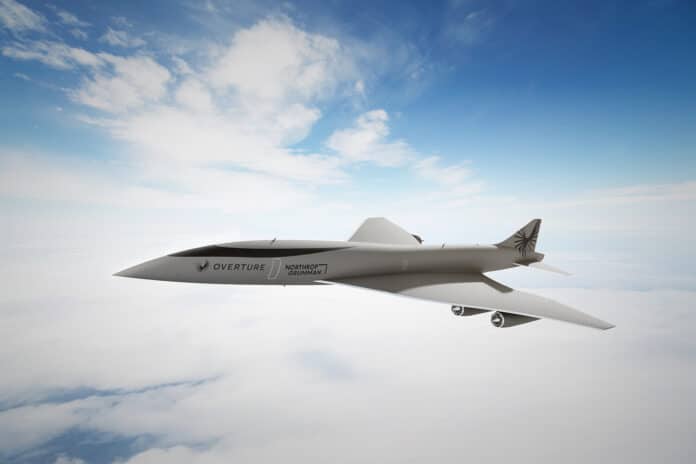Northrop Grumman Corporation and Boom Supersonic have signed an agreement to develop a new supersonic special-mission aircraft that is tailored to provide quick-reaction capabilities to the U.S. military and allies. The agreement to together propose special mission variants of Boom’s Overture supersonic aircraft was finalized at the Farnborough International Air Show.
Boom Supersonics is working on its 205-ft long Overture, designed to carry up to 80 passengers at speeds of Mach 1.7 over water and Mach 0.94 over land – this is twice the speed of today’s subsonic airliners. Attritionary, the aircraft will run on 100% sustainable aviation fuel (SAF).
The special mission variant of Overture has the potential to support government and military missions that require rapid response. Potential applications for supersonic aircraft include quick-reaction surveillance and reconnaissance, command, and control, as well as mobility and logistics missions, such as emergency medical evacuation and troop transport.
The details of the collaboration are still scarce on the ground. But fitted with specialized capabilities, the new variants could be used to deliver medical supplies, provide for emergency medical evacuation or surveil vast areas faster than conventional aircraft. The special mission Overture variant could also be used to coordinate other aircraft and ground assets in a variety of scenarios.
“Pairing Northrop Grumman’s airborne defense systems integration expertise with Boom’s advanced Overture supersonic aircraft demonstrates the power of collaborations like this for the benefit of our customers,” said Tom Jones, president of Northrop Grumman Aeronautics Systems. “Together, we can ensure our military customers have variants of Overture for missions where advanced system capabilities and speed are critical.”
Designed and built in the United States, the first Overture aircraft will be in production for commercial use in 2024, start flight tests in 2026 and begin carrying passengers in 2029.
